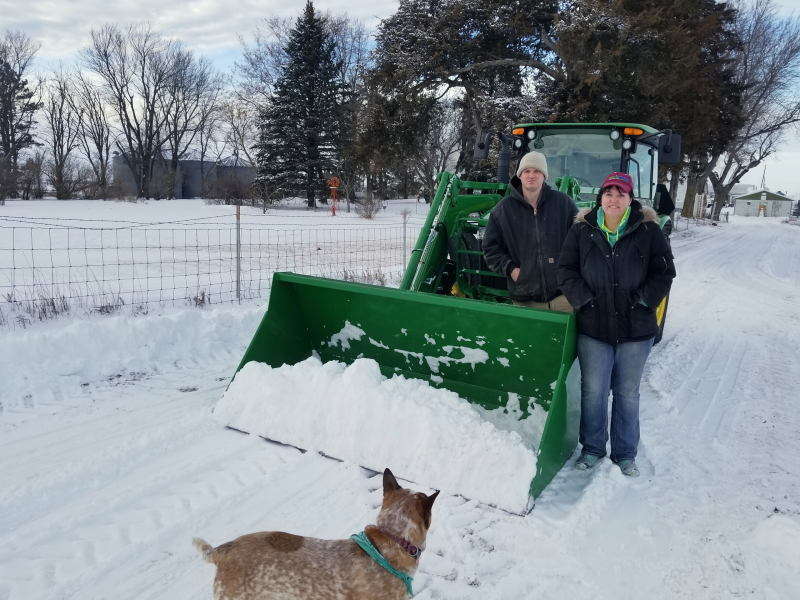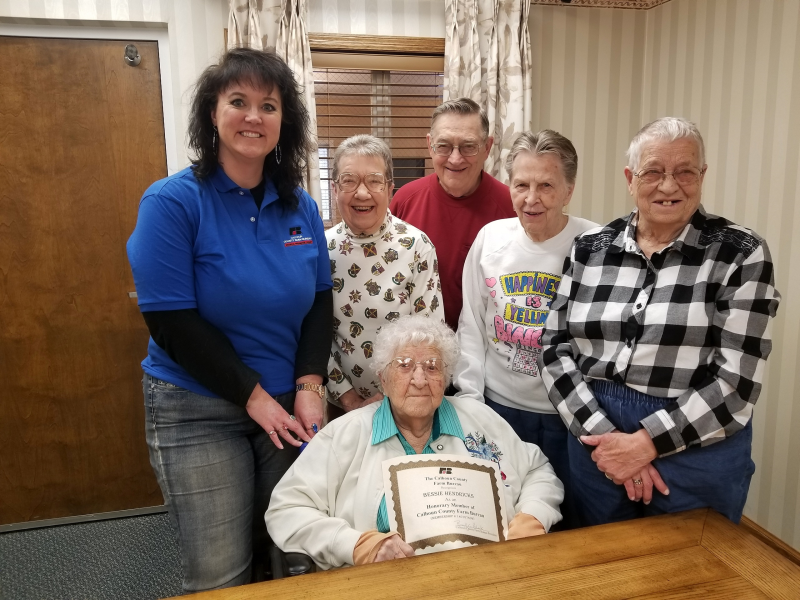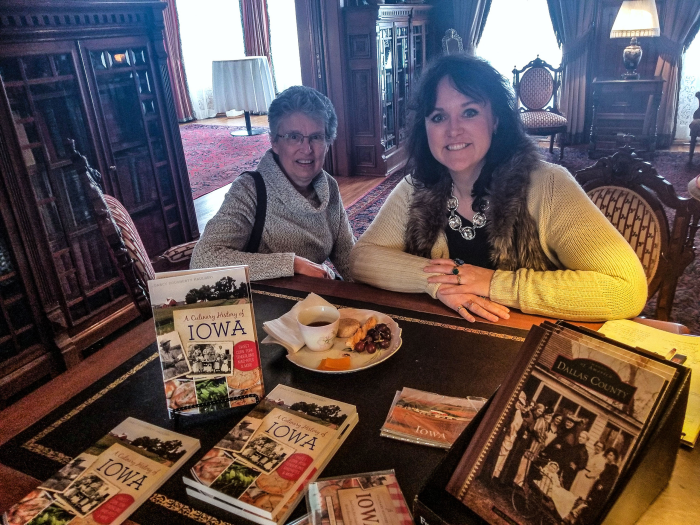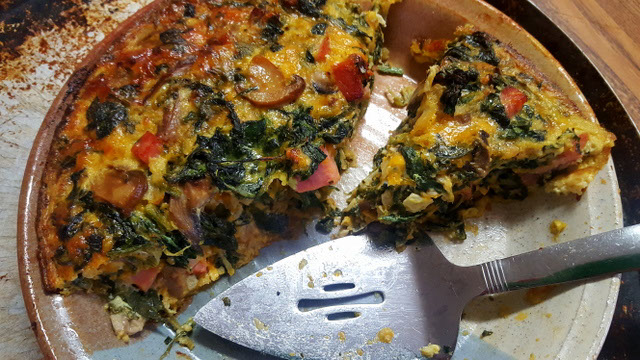Farm Life Journal - March 2018
March 14, 2018
By Darcy Maulsby
Greetings from Yetter!

Winter has been called the “quiet season,” but it’s certainly a busy time around our farm, especially as spring approaches.
We’re getting ready for planting, which will start in April. The local co-op applied dry fertilizer on our fields in February. We plan on sticking with our 50-50 corn and soybean rotation. There is some talk that U.S. farmers may grow more soybeans than corn this year. If this occurs, this will be the first time in history this has happened. We’ll see how things shake out.
Where does all this grain go? Many of the corn and soybeans raised in Iowa go into livestock feed, but there are so many other uses, too. Did you know 40 percent of Iowa corn is processed into ethanol? I learned this during a recent meeting here in Calhoun County with Iowa Secretary of Agriculture Mike Naig.
A significant portion of Iowa ag products, especially soybeans, are also exported to buyers worldwide. I had the chance to explain to local middle school students how this works during an international ag class I teach at the Calhoun County Farm Bureau’s annual Ag Day.
This year, we were at the South Central Calhoun Middle School in Rockwell City, and I showed the students photos of an ag mission trip I went on to South Korea and Vietnam with the Iowa Corn Growers Association. It was fun to explain how South Korea, which hosted the 2018 Winter Olympics, is a key market for many Iowa ag exports.
While the Winter Olympics were fun to watch, the realities of winter here in Iowa aren’t always so fun. My younger brother, Jason, stayed busy plowing snow to keep the lanes open around the farm this winter. My dog, Maggie the Red Heeler, doesn’t view snow as work. She loves playing in the snow and eating it, too!
 Connecting with the Community
Connecting with the Community
Jason also made time this winter to head to the local Farm Service Agency (FSA) office in Rockwell City to sign up for farm programs. These programs are designed to help farmers manage market risks, recover from disasters, and conserve and protect Iowa’s natural resources.
I stopped by the FSA office in February to meet with the local Women, Land and Legacy (WLL) group. Ladies from around Calhoun County are meeting this winter and spring to organize educational seminars and networking opportunities in my local area through WLL, which empowers female landowners and farmers to be agents of positive change in their communities.
I’ve also been volunteering at some other local ag activities, including:
- Working with future farmers. It was fun to judge the FFA Reporter's Scrapbook contest for FFA chapters in Iowa's northwest district on March 3 at East Sac High School in Lake View. I loved seeing all the FFA members in their blue jackets and watching how excited they are about agriculture. (If you want to read about my own FFA journey and how it allowed me to skip 10th grade biology for the entire school year, check out the story here.)
- Recognizing an influential Lake City community member. I had the honor of presenting 110-year-old Bessie Hendricks of Shady Oaks Care Center in Lake City with a certificate naming her an honorary member of the Calhoun County Farm Bureau. Bessie was born Nov. 7, 1907, so she was almost 11 years old by the time the Calhoun County Farm Bureau was formed in 1918. Bessie and her husband, Paul, raised their five children on the farm and four (Shirley, Leon, Glenda and Joan) still live in Lake City. We're proud to honor our ag history here in Calhoun County!
- Celebrating Iowa’s leadership in agriculture. It was also great to honor Iowa ag at Iowa Corn’s District 4 banquet on February 15 in Carroll at Santa Maria Winery. It was fun to see a good friend, former Iowa Secretary of Agriculture Bill Northey, who is now the U.S. Department of Agriculture’s under secretary for farm production and conservation. It’s great to have an Iowan like Bill serving in such an important role in Washington, D.C.
Let’s Talk Food
While I haven’t traveled to Washington, D.C., this winter, I have been making the rounds with my “Culinary History of Iowa” program, which is based on my book of the same name.

It turns out that Iowa’s culinary history is a hot topic. I was honored to write the cover story "Savoring Iowa's Culinary Culture” for the March 2018 issue of the Iowa History Journal. You can find the magazine at Casey's convenience stores, Hy-Vee grocery stores and other stores around Iowa.On February 17, I headed to Iowa City to give this program at Prairie Lights, a local, independent bookstore. I also shared this same program a week before in Des Moines at the Iowa Governor’s Mansion for the “Terrace Hill Tea & Talk” series. During the book signing, I had the pleasure of meeting Martha Henrichs, an Iowa Food & Family Project fan from Des Moines.
I bet you can tell I love talking about Iowa food. Let’s talk ham, since Easter is just a few weeks away.
In the days before refrigeration, hogs were harvested in the fall and were preserved by curing (salting and/or smoking). This process took a long time, and the first hams were ready to eat in the spring, making ham a natural choice for the Easter celebration.A ham for Easter dinner has been a tradition in my family for as long as I can remember. Maybe it’s no surprise, since I grew up on a hog farm. Have you ever wondered why ham became an Easter tradition?
The National Pork Board, which is based in Clive, Iowa conducted a Ham Research Study (wouldn’t you love that job?) and found that that 69 percent of Americans served ham for Easter dinner in 2016. Also, 55 percent of consumers enjoy ham as an everyday meal. I’m certainly one of them.
If you have leftover ham this Easter, why not power up your next meal with my Crustless Quiche? Iowa is a powerhouse when it comes to both pork and egg production in America — we’re the No. 1 producer of both eggs and pork.
Crustless Spinach and Ham Quiche Recipe
Servings: 8
 1 tablespoon olive oil
1 tablespoon olive oil- 1 cup chopped onion
- 1 cup sliced fresh mushrooms (or 2 cans sliced mushrooms)
- Diced red and orange peppers, if desired
- 1 package (10 ounces) frozen chopped spinach, thawed and drained
- 1 cup chopped, fully cooked ham
- 5 large eggs
- 3 cups shredded Cheddar or Monterey Jack cheese
- 1/8 teaspoon fresh ground pepper
In a large skillet, saute onion and mushrooms in oil until tender. Add spinach and ham; cook and stir until the excess moisture is evaporated. Cool slightly. Beat eggs; add cheese and mix well. Stir in spinach mixture and pepper; blend well. Spread evenly into a greased 9-inch pie plate or quiche dish. Bake at 350° for 40-45 minutes or until a knife inserted in center comes out clean.
This recipe is incredibly simple, flavorful and packed with veggies and protein. What more could you ask for?
Talk to you soon!
Darcy